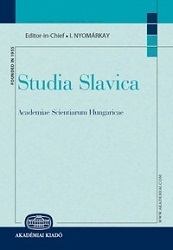Мотивы древнегреческой мифологии в повести Гоголя Вий
The Motives of Ancient Greek Mythology in Gogol’s Story Vij
Author(s): Sergei ShultsSubject(s): Christian Theology and Religion, Ancient World, Russian Literature, Existentialism, Philosophy of Religion, Hermeneutics
Published by: Akadémiai Kiadó
Keywords: Gogol; ancient Greek mythology; pagan and Christian motives; Orpheus and Eurydice; Eros and Thanatos;
Summary/Abstract: The facts of Gogol’s appeal to the models of classical forms of myth and ritual are interesting not only by themselves but also in the aspect of their relationship with the arsenal of Christian mythology. The fundamental point here is that in light of the historical interpretation of the myth and the Revelation by F. W. J. Schelling, the mythology since its initial stage organically developed to Christianity, to the truths of Revelation (as the historical movement “flowed” into them). The symbolic complex of the story Vij, interlacing with Eros and Thanatos, allows parallels to the myth of Orpheus and Eurydice since in the case of the story Vij and in the case of myth, the motive of prohibition on sight also holds. The philosopher (i.e. the poet in the archaic and romantic notion) Homa Brut comes into contact with the world of death not of his own free will, besides, the panicle Eurydice died because of him. Orpheus partakes of the Dionysian sacraments. A visit to Orpheus of hell equated him, in Christian understanding, with Christ. In Gogol’s story Vij, Dionysus and Christ have implicitly come together. The motive of the story Vij for blindness is related to Oedipus’s self-blindness motive. Mythological Erinnes, persecuted by Oedipus, are old women, which correlates with one of the chthonic incarnations of the plaque, thereby drawing closer to the goddesses of revenge, punishment, and remorse of conscience. The fact of the final recognition of Oedipus as “holy” is reflected in the potential Christian semantics of the image of Homa as a martyr and passion-bearer. As the winner of the witch, the deliverer of people from her misfortunes and the passion bearer Homa is a Christian ascetic. Against the background of Christian parallels, the second stay of Homa on the farm becomes as if his “second coming”, symbolically comparable to the expected second coming of Christ, who is coming all the time. The terrible glance of Vij and pannochka certainly reminds of the slaying glance of Medusa Gorgon, which forced all living things to petrify. There is pathos of fighting tyranny in ridding the farm from the witch by Homa. Although Homa defends himself first of all in the beating scene, the general social meaning of his action is obvious. The power of the pannochka (she is the daughter of a wealthy sotnik), who for some reason considers himself pious, is not only socio-political but, in the main, existential-anthropological, this domination over man as a species, over man as such. The motives of ancient Greek and in general pagan mythology are closely intertwined in Gogol’s story with Christian motives, which formed the unique spiritual and aesthetic synthesis of the story Vij.
Journal: Studia Slavica Academiae Scientiarum Hungaricae
- Issue Year: 64/2019
- Issue No: 1
- Page Range: 171-183
- Page Count: 13
- Language: Russian
- Content File-PDF

